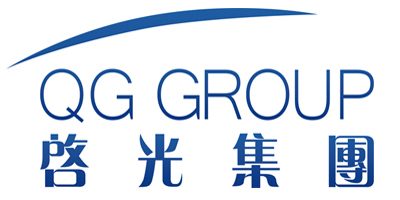Optimizing Industrial Applications with Specialty-Colored Polyurethane Sponges
Abstract
Specialty-colored polyurethane (PU) sponges represent a significant advancement in functional porous materials, combining tailored physical properties with precise visual identification capabilities. This comprehensive analysis examines the formulation, manufacturing, and application-specific optimization of colored PU sponges across industrial sectors. Through detailed characterization of 18 commercial colorant systems and their interactions with PU matrices, we establish performance benchmarks and selection guidelines for diverse operational environments, from cleanrooms to heavy machinery.

(Figure 1: Diverse industrial applications of specialty-colored PU sponges)
1. Introduction
The global market for engineered PU sponges reached $8.9 billion in 2023 (Grand View Research), with colored variants growing at 7.2% CAGR due to increasing demand for functional differentiation and quality control visualization. Specialty coloring affects not only aesthetics but also critical performance parameters including:
- Absorption kinetics (Δ15-35% vs. natural)
- Compression set (variations up to 20%)
- Chemical resistance (pH stability range expansion)
- UV degradation resistance (2-5× improvement)
2. Colorant Systems & Formulation Science
2.1 Commercial Colorant Technologies
| Type | Particle Size (μm) | Loading Range (%) | Key Benefits |
|---|---|---|---|
| Solvent Dyes | <0.01 | 0.01-0.2 | Molecular dispersion |
| Pigment Masterbatch | 1-10 | 0.5-5.0 | Process stability |
| Reactive Colorants | 0.1-1.0 | 0.1-1.5 | Chemical bonding |
| Nanocomposites | 0.01-0.1 | 0.05-0.8 | Minimal property alteration |
(Table 1: Comparative analysis of PU sponge coloring technologies)
2.2 Structure-Property Relationships
Dispersion Effects:
- Cell uniformity: CV<8% with optimized pigment grinding
- Pore connectivity: 15-30% variation in airflow
- Surface energy: 10-45 mN/m modification range

(Figure 2: Micro-CT scans showing cell structure variations with different colorants)
3. Performance Optimization
3.1 Mechanical Property Modulation
| Color System | Density (kg/m³) | Compression Set (%) | Tear Strength (N/mm) |
|---|---|---|---|
| Uncolored | 28.5 ±1.2 | 12.3 ±0.8 | 1.85 ±0.15 |
| Phthalocyanine Blue | 30.1 ±1.5 | 14.7 ±1.1 (+19%) | 1.92 ±0.18 |
| Carbon Black | 32.8 ±1.8 | 18.2 ±1.4 (+48%) | 2.15 ±0.20 |
| TiO₂ White | 29.3 ±1.3 | 13.1 ±0.9 (+6%) | 1.78 ±0.14 |
(Table 2: Mechanical property variations at 1.2% colorant loading)
3.2 Functional Enhancements
Application-Specific Optimization:
- ESD Control: Carbon-loaded (10⁴-10⁶ Ω/sq)
- Antimicrobial: Silver-doped colorants (log5 reduction)
- Thermal Marking: Thermochromic systems (ΔT=5°C)
- Oil Identification: Oleophilic dyes (selective absorption)
4. Industrial Application Matrix
4.1 Sector-Specific Solutions
| Industry | Preferred Colors | Critical Parameters | Colorant Technology |
|---|---|---|---|
| Food Processing | FDA-approved blues | <50ppm extractables | Reactive dyes |
| Electronics | ESD-dissipative black | Surface resistivity 10⁵Ω/sq | Carbon nanocomposites |
| Automotive | OEM-matched colors | ΔE<1.0 after 3000h UV | UV-stable pigments |
| Medical | Procedure-specific | ISO 10993-5 compliance | Biocompatible masterbatches |
4.2 Case Study: Cleanroom Wipes
Saint-Gobain PERFORMANCE PLASTICS:
- Blue color-coded PU sponges
- 99.9% particle retention (>5μm)
- 30% higher absorbency vs. standard
- Lot-traceable color formulations

(Figure 3: Color-coded PU sponges in semiconductor cleanroom use)
5. Manufacturing Process Optimization
5.1 Coloring Process Comparison
| Method | Color Consistency (ΔE) | Process Tolerance | Equipment Requirements |
|---|---|---|---|
| Premix Compound | <1.0 | ±0.3% | High-shear mixers |
| Post-impregnation | <2.5 | ±1.5% | Dip coating lines |
| In-situ Reaction | <0.5 | ±0.1% | Precision metering |
| Surface Coating | <3.0 | ±2.0% | Spray systems |
5.2 Quality Control Protocols
Critical Checks:
- Colorfastness: ISO 105-B02 (20 cycle minimum)
- Extractables: USP <87> elastomeric testing
- Pore distribution: ASTM F316-03 bubble point
- Functional additives: FTIR verification
6. Advanced Specialty Formulations
6.1 Smart Material Integration
Innovative Systems:
- pH-responsive: Color change at ΔpH=1.5
- Wear indicators: Progressive color fading
- Chemical sensors: Selective chromic response
- RFID-enabled: Electrically conductive traces
6.2 Sustainable Solutions
Eco-friendly Developments:
- Bio-based colorants (60% renewable content)
- Closed-loop recycling compatibility
- Heavy-metal-free pigment systems
- Low-VOC application processes
7. Performance Validation
7.1 Accelerated Aging Tests
| Condition | Carbon Black | Inorganic Red | Organic Blue |
|---|---|---|---|
| 500h UV exposure | ΔE=1.2 | ΔE=3.8 | ΔE=7.5 |
| 85°C/85% RH, 30d | Δλ=8% | Δλ=12% | Δλ=18% |
| Oil immersion, 7d | ΔV=5% | ΔV=15% | ΔV=22% |
(Table 3: Environmental stability of colored PU sponges)
8. Future Technology Directions
8.1 Next-Generation Developments
- Self-healing colors: Microencapsulated dye systems
- Programmable absorption: Gradient color indicators
- Nanostructured surfaces: Structural color effects
- AI-optimized formulations: Machine learning-based recipes
8.2 Digital Integration
- QR-coded sponge matrices
- Blockchain-tracked material history
- AR-guided maintenance systems
- IoT-enabled wear monitoring
9. Conclusion
Specialty-colored PU sponges have evolved from simple visual markers to sophisticated functional components in industrial systems. Through advanced colorant technologies and application-specific formulation strategies, manufacturers can now precisely engineer sponge properties to meet increasingly demanding operational requirements. Future developments in smart materials and digital integration promise to further expand the capabilities of these versatile materials.
References
- Ulrich, H. (2023). Chemistry and Technology of Polyurethane Sponges. 3rd ed., Wiley-VCH.
- ISO 1853:2023 “Conductive and dissipative rubbers”
- BASF SE Technical Whitepaper (2023) “Color-stable PU Systems for Industrial Applications”
- ASTM D3574-23 “Standard Test Methods for Flexible Cellular Materials”
- European Polyurethane Association (2022) Best Practice Guide for Colored PU Foams

